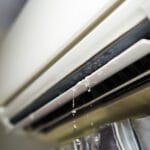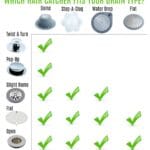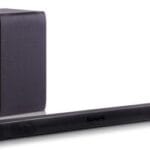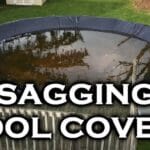To stop water coming through a garage wall, first identify the source of the leak. Then, apply a waterproof sealant or membrane to the affected area.
Dealing with water intrusion in your garage can be frustrating and damaging to property stored within. Homeowners often face the challenge of keeping their garages dry, especially during rainy seasons or in areas prone to groundwater issues. Finding the right solution requires understanding the cause, which could range from cracks in the foundation, poor drainage around the garage perimeter, to issues with the roof or gutters.
Addressing this problem promptly can prevent further damage, such as mold growth or structural weakening. This guide aims to offer practical steps to identify leaks and effectively seal them, ensuring your garage remains dry and protected against water damage. With the right approach, maintaining a dry garage is achievable, safeguarding your belongings and preserving the integrity of your home.
Identifying The Source Of Water Infiltration
Stopping water from invading your garage starts by pinpointing the entry points. A thorough investigation reveals where and how moisture breaches the barrier. This step is vital. It ensures that any fixes are effective and lasting. Let’s delve into the methods to identify these troublesome spots.
Visual Inspection For Leaks
Begin with a visual scan of the garage interior. Look for signs of water such as puddles, dampness, or staining. Walls and the floor are common areas where water marks manifest. Check during or after heavy rain for best results. This helps in locating active leaks.
- Check corners: Water often gathers here.
- Examine joints: Wall-floor joints are potential weak points.
- Inspect seals: Around windows and doors, seals can degrade.
Detecting Structural Weakness
Water infiltration sometimes stems from structural issues. Inspect the exterior walls for cracks, gaps, or holes. Even small breaches can let in significant moisture. Use a flashlight to highlight imperfections. Pay special attention to areas where utilities enter the garage.
| Location | Signs of Weakness |
|---|---|
| Foundation | Cracks, uneven settling |
| Walls | Cracks, flaking paint |
| Roof Line | Warped or rotted wood |
Identifying these issues early can prevent extensive water damage. Once you find the source, you can proceed with the right repair strategy. Be thorough and methodical to ensure your garage remains dry and protected.
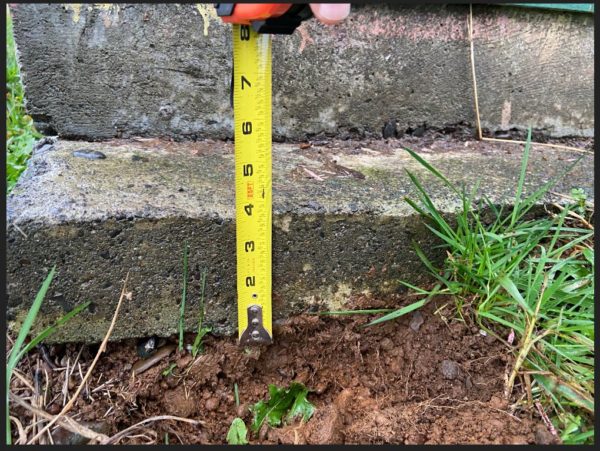
Credit: buildingadvisor.com
Sealing Cracks And Gaps
Water seeping through garage walls can be a nuisance. The solution lies in sealing cracks and gaps effectively. This not only prevents water ingress but also safeguards the structural integrity of the garage. It’s essential to choose the right sealant and apply it correctly.
Choosing The Right Sealant
Selecting an appropriate sealant is crucial. Ideal characteristics include waterproof, flexible, and durable properties. Sealants come in various types. Silicone and polyurethane sealants are popular choices. They offer strong adhesion and long-term protection.
Consider the following when choosing a sealant:
- Material compatibility with your garage wall.
- Waterproof to stop moisture penetration.
- Flexibility to accommodate wall movements.
- Durability against weather and temperature changes.
Step-by-step Application Process
Proper application ensures the best seal. Follow these steps for a successful application:
- Clean the area. Remove debris and dirt for a good seal.
- Dry the surface. Moisture affects sealant adhesion.
- Apply the sealant. Use a caulking gun for even distribution.
- Smooth the sealant. Create a tight, level seal with a tool.
- Cure as directed. Allow time for the sealant to set fully.
By following these steps, you can effectively block water from coming through your garage wall. Remember, regular inspection and maintenance are key to keeping your garage dry and secure.
Improving Exterior Drainage
Water seeping through garage walls can cause big problems. One effective solution is to improve exterior drainage. This keeps water away from your garage walls. Let’s explore two key steps: installing gutters and downspouts, and grading the landscape.
Installing Gutters And Downspouts
Gutters and downspouts play a vital role in directing water away from your garage. Without them, rainwater falls directly near your garage walls. This can lead to moisture problems. Here’s how to install them:
- Measure your garage’s roof to determine gutter length.
- Choose gutters that fit your garage’s style and needs.
- Attach gutters securely along the roof’s edge.
- Connect downspouts to gutters. Place them at corners for best flow.
- Ensure downspouts direct water away from the garage. Use extensions if needed.
Grading The Landscape
Proper landscape grading ensures water flows away from your garage. If the ground slopes towards your garage, water can pool against walls. This leads to leaks. Here’s how to grade your landscape effectively:
- Check the slope around your garage. It should slope away.
- Use a shovel and rake to adjust the slope if necessary.
- Add soil near the garage wall to create a gentle slope away.
- Compact the soil to prevent it from washing away in the rain.
- Plant grass or other plants to help hold the soil in place.
By following these steps, you can keep your garage dry and water-free.
Waterproofing Exterior Walls
Water seepage in garages is a common issue. Proper waterproofing of exterior walls stops this problem. This process involves selecting the right coatings and applying them correctly. Let’s explore how to keep your garage dry and protected.
Selecting Waterproof Coatings
Choosing the right waterproof coating is crucial for exterior walls. Here are options:
- Acrylic Coatings: Flexible and durable.
- Urethane Coatings: Resistant to abrasion.
- Silicate-Based Coatings: Penetrate deep into walls.
Application Techniques
Proper application ensures effectiveness. Follow these steps:
- Surface Prep: Clean and repair walls first.
- Primer: Apply a suitable primer layer.
- Coat Application: Use brushes or sprayers for even coverage.
- Curing Time: Allow adequate time for drying.
Interior Solutions For Water Management
Water seeping into garages is a common issue. Various interior solutions can tackle this problem effectively. Let’s explore some practical ways to manage water intrusion from the inside of your garage.
Using Water Barriers
Water barriers are essential in preventing moisture entry. These barriers come in different forms, such as sealants or waterproof coatings.
- Apply sealants on interior garage walls.
- Use waterproof paint for an extra layer of protection.
- Install plastic sheeting against the wall for a physical barrier.
Consistent maintenance of these barriers ensures long-term dryness. Check the barriers regularly and reapply as needed.
Installing A Sump Pump
Sump pumps work well in removing accumulated water. They are installed at the lowest point of the garage floor.
- Choose the correct sump pump size for your garage.
- Ensure proper installation by a professional.
- Test the sump pump regularly to avoid failures.
A sump pump will actively pump out water. This keeps the garage dry and protects your property.
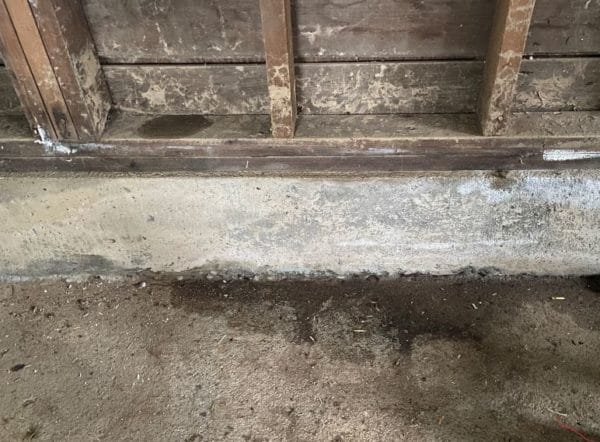
Credit: buildingadvisor.com
Maintaining Your Garage Walls
Maintaining your garage walls is key to stopping water intrusion. A dry and well-maintained garage wall can save you from many troubles. Water seepage not only damages the structure but also creates a perfect environment for mold and mildew. Let’s explore how regular checks and addressing mold and mildew can help.
Regular Checks And Balances
Conducting regular inspections of your garage walls is crucial. Look for cracks, holes, or any signs of water damage. These checks help identify issues before they worsen. A simple routine can include:
- Visual inspection every month
- Checking for damp spots or peeling paint
- Ensuring downspouts and gutters are clear and direct water away from the garage
Seal any cracks or holes with waterproof sealant. This step prevents water from entering through gaps.
Dealing With Mold And Mildew
Mold and mildew thrive in damp environments. They can cause health issues and damage to your garage walls. Here’s how to tackle them:
- Identify areas with mold or mildew.
- Use a mixture of water and bleach to clean the affected areas.
- Ensure good ventilation to dry out the walls completely.
- Consider using dehumidifiers to keep the air dry.
Preventing mold and mildew starts with keeping your garage dry. Focus on fixing leaks and improving airflow.
Professional Solutions
Water intrusion in a garage can lead to serious damage. Homeowners often need professional help to fix this issue effectively. Experts bring advanced tools and techniques to ensure a dry and safe garage space. Explore when to call a professional and what services they offer.
When To Call A Professional
It’s crucial to recognize signs that require expert intervention:
- Significant water pooling inside the garage
- Cracks or holes in the garage walls
- Mold or mildew growth due to moisture
- Walls that feel damp to the touch
Don’t wait for the damage to worsen. Call an expert if you notice these signs.
Services Offered By Experts
Professionals offer a range of services to tackle water leaks:
| Service | Description |
|---|---|
| Waterproofing | Applying sealants and coatings to block water |
| Crack Repair | Filling and sealing cracks in walls and floors |
| Drainage Improvement | Installing systems to redirect water away |
| Moisture Barriers | Adding layers to prevent water penetration |
Professionals also assess the garage structure to customize solutions.

Credit: www.doityourself.com
Preventive Measures For The Future
Preventive Measures for the Future ensure your garage stays dry year-round. They save time and money. Proper planning can block water from seeping through garage walls. Let’s explore ways to safeguard your space.
Seasonal Maintenance Tips
- Inspect seals around garage doors and windows.
- Clear gutters to prevent overflow against walls.
- Check drainage to direct water away from the building.
- Apply waterproof paint or sealant regularly.
Upgrading Garage Insulation
Good insulation blocks moisture. It also saves energy. Consider these steps:
| Insulation Type | Benefits |
|---|---|
| Fiberglass | Economical, easy to install |
| Foam Board | High R-value, water-resistant |
| Spray Foam | Seals gaps, high insulation |
Replace old weather-stripping. Add or replace insulation in walls and ceiling. Consider a professional for the best results.
Frequently Asked Questions
Why Does Water Seep Through Garage Walls?
Water penetration in garage walls usually results from poor drainage, cracks in the walls, or inadequate waterproofing materials being used during construction.
What Materials Prevent Garage Water Leaks?
Waterproof sealants, masonry waterproofer, and rubberized coatings are effective materials for preventing water leaks in garage walls.
How To Identify Garage Wall Water Leaks?
Look for damp spots, efflorescence, mold growth, or peeling paint, which are common indicators of water leakage in garage walls.
Can Landscaping Affect Garage Water Seepage?
Improper landscaping can lead to water pooling around the garage, increasing the risk of seepage through the walls.
What Maintenance Tips Reduce Water Intrusion?
Regular maintenance, such as sealing cracks, cleaning gutters, and ensuring proper ground slope away from the garage, can reduce water intrusion significantly.
Conclusion
Stopping water intrusion in your garage is crucial for protecting your property. By following the steps outlined in this post, you can effectively seal and safeguard your space. Remember, regular maintenance is key to preventing future leaks. Keep your garage dry and your belongings safe with these proactive measures.

